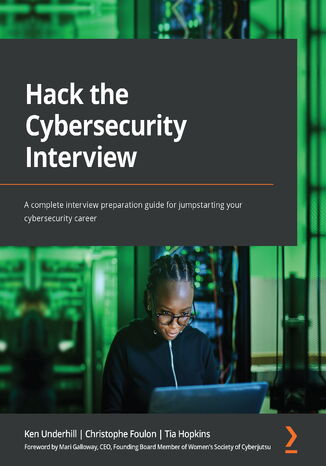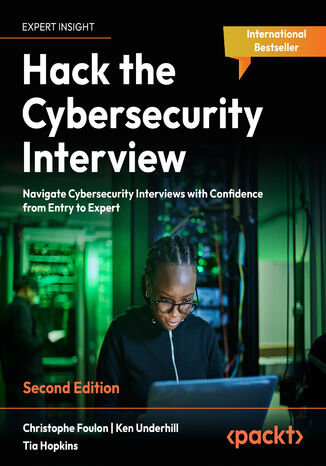Kategorien
-
- Bitcoin
- Geschäftsfrau
- Coaching
- Controlling
- E-Business
- Ökonomie
- Finanzen
- Börse und Investitionen
- Persönliche Kompetenzen
- Computer im Büro
- Kommunikation und Verhandlungen
- Kleines Unternehmen
- Marketing
- Motivation
- Multimedia-Training
- Immobilien
- Überzeugung und NLP
- Steuern
- Sozialpolitik
- Handbȕcher
- Präsentationen
- Führung
- Public Relation
- Berichte, Analysen
- Geheimnis
- Social Media
- Verkauf
- Start-up
- Ihre Karriere
- Management
- Projektmanagement
- Personal (HR)
-
- Architektura i wnętrza
- Sicherheit und Gesundheit am Arbeitsplatz
- Biznes i Ekonomia
- Haus und Garten
- E-Business
- Ekonomia i finanse
- Esoterik
- Finanzen
- Persönliche Finanzen
- Unternehmen
- Fotografie
- Informatik
- HR und Gehaltsabrechnung
- Frauen
- Computer, Excel
- Buchhaltung
- Kultur und Literatur
- Wissenschaftlich und akademisch
- Umweltschutz
- meinungsbildend
- Bildung
- Steuern
- Reisen
- Psychologie
- Religion
- Landwirtschaft
- Buch- und Pressemarkt
- Transport und Spedition
- Gesundheit und Schönheit
-
- Office-Programme
- Datenbank
- Bioinformatik
- IT Branche
- CAD/CAM
- Digital Lifestyle
- DTP
- Elektronik
- Digitale Fotografie
- Computergrafik
- Spiele
- Hacking
- Hardware
- IT w ekonomii
- Wissenschaftliche Pakete
- Schulbücher
- Computergrundlagen
- Programmierung
- Mobile-Programmierung
- Internet-Server
- Computernetzwerke
- Start-up
- Betriebssysteme
- Künstliche Inteligenz
- Technik für Kinder
- Webmaster
-
- Anthologien
- Ballade
- Biografien und Autobiografien
- Für Erwachsene
- Drama
- Tagebücher, Memoiren, Briefe
- Epos
- Essay
- Science Fiction
- Felietonys
- Fiktion
- Humor, Satire
- Andere
- Klassisch
- Krimi
- Sachbücher
- Belletristik
- Mity i legendy
- Nobelpreisträger
- Kurzgeschichten
- Gesellschaftlich
- Okultyzm i magia
- Erzählung
- Erinnerungen
- Reisen
- Gedicht
- Poesie
- Politik
- Populärwissenschaftlich
- Roman
- Historischer Roman
- Prosa
- Abenteuer
- Journalismus
- Reportage
- Romans i literatura obyczajowa
- Sensation
- Thriller, Horror
- Interviews und Erinnerungen
-
- Archäologie
- Bibliotekoznawstwo
- Filmwissenschaft
- Philologie
- Polnische Philologie
- Philosophie
- Finanse i bankowość
- Erdkunde
- Wirtschaft
- Handel. Weltwirtschaft
- Geschichte und Archäologie
- Kunst- und Architekturgeschichte
- Kulturwissenschaft
- Linguistik
- Literaturwissenschaft
- Logistik
- Mathematik
- Medizin
- Geisteswissenschaften
- Pädagogik
- Lehrmittel
- Populärwissenschaftlich
- Andere
- Psychologie
- Soziologie
- Theatrologie
- Teologie
- Theorien und Wirtschaftswissenschaften
- Transport i spedycja
- Sportunterricht
- Zarządzanie i marketing
-
- Sicherheit und Gesundheit am Arbeitsplatz
- Geschichte
- Verkehrsregeln. Führerschein
- Rechtswissenschaften
- Gesundheitswesen
- Allgemeines. Wissenskompendium
- akademische Bücher
- Andere
- Bau- und Wohnungsrecht
- Zivilrecht
- Finanzrecht
- Wirtschaftsrecht
- Wirtschafts- und Handelsrecht
- Strafrecht
- Strafrecht. Kriminelle Taten. Kriminologie
- Internationales Recht
- Internationales und ausländisches Recht
- Gesundheitsschutzgesetz
- Bildungsrecht
- Steuerrecht
- Arbeits- und Sozialversicherungsrecht
- Öffentliches, Verfassungs- und Verwaltungsrecht
- Familien- und Vormundschaftsrecht
- Agrarrecht
- Sozialrecht, Arbeitsrecht
- EU-Recht
- Industrie
- Agrar- und Umweltschutz
- Wörterbücher und Enzyklopädien
- Öffentliche Auftragsvergabe
- Management
-
- Afrika
- Alben
- Südamerika
- Mittel- und Nordamerika
- Australien, Neuseeland, Ozeanien
- Österreich
- Asien
- Balkan
- Naher Osten
- Bulgarien
- China
- Kroatien
- Tschechische Republik
- Dänemark
- Ägypten
- Estland
- Europa
- Frankreich
- Berge
- Griechenland
- Spanien
- Niederlande
- Island
- Litauen
- Lettland
- Mapy, Plany miast, Atlasy
- Miniführer
- Deutschland
- Norwegen
- Aktive Reisen
- Polen
- Portugal
- Andere
- Przewodniki po hotelach i restauracjach
- Russland
- Rumänien
- Slowakei
- Slowenien
- Schweiz
- Schweden
- Welt
- Türkei
- Ukraine
- Ungarn
- Großbritannien
- Italien
-
- Lebensphilosophien
- Kompetencje psychospołeczne
- zwischenmenschliche Kommunikation
- Mindfulness
- Allgemeines
- Überzeugung und NLP
- Akademische Psychologie
- Psychologie von Seele und Geist
- Arbeitspsychologie
- Relacje i związki
- Elternschafts- und Kinderpsychologie
- Problemlösung
- Intellektuelle Entwicklung
- Geheimnis
- Sexualität
- Verführung
- Aussehen ind Image
- Lebensphilosophien
-
- Bitcoin
- Geschäftsfrau
- Coaching
- Controlling
- E-Business
- Ökonomie
- Finanzen
- Börse und Investitionen
- Persönliche Kompetenzen
- Kommunikation und Verhandlungen
- Kleines Unternehmen
- Marketing
- Motivation
- Immobilien
- Überzeugung und NLP
- Steuern
- Sozialpolitik
- Handbȕcher
- Präsentationen
- Führung
- Public Relation
- Geheimnis
- Social Media
- Verkauf
- Start-up
- Ihre Karriere
- Management
- Projektmanagement
- Personal (HR)
-
- Anthologien
- Ballade
- Biografien und Autobiografien
- Für Erwachsene
- Drama
- Tagebücher, Memoiren, Briefe
- Epos
- Essay
- Science Fiction
- Felietonys
- Fiktion
- Humor, Satire
- Andere
- Klassisch
- Krimi
- Sachbücher
- Belletristik
- Mity i legendy
- Nobelpreisträger
- Kurzgeschichten
- Gesellschaftlich
- Okultyzm i magia
- Erzählung
- Erinnerungen
- Reisen
- Poesie
- Politik
- Populärwissenschaftlich
- Roman
- Historischer Roman
- Prosa
- Abenteuer
- Journalismus
- Reportage
- Romans i literatura obyczajowa
- Sensation
- Thriller, Horror
- Interviews und Erinnerungen
-
- Archäologie
- Philosophie
- Wirtschaft
- Handel. Weltwirtschaft
- Geschichte und Archäologie
- Kunst- und Architekturgeschichte
- Kulturwissenschaft
- Literaturwissenschaft
- Mathematik
- Medizin
- Geisteswissenschaften
- Pädagogik
- Lehrmittel
- Populärwissenschaftlich
- Andere
- Psychologie
- Soziologie
- Teologie
- Zarządzanie i marketing
-
- Lebensphilosophien
- zwischenmenschliche Kommunikation
- Mindfulness
- Allgemeines
- Überzeugung und NLP
- Akademische Psychologie
- Psychologie von Seele und Geist
- Arbeitspsychologie
- Relacje i związki
- Elternschafts- und Kinderpsychologie
- Problemlösung
- Intellektuelle Entwicklung
- Geheimnis
- Sexualität
- Verführung
- Aussehen ind Image
- Lebensphilosophien
Pełna śniegu opowieść o otaczającej nas magii. Święta za pasem, a w życiu Julki zaczynają dziać się coraz dziwniejsze rzeczy, których nie potrafi wytłumaczyć. Daleka podróż w zaskakującym kierunku, gulasz z renifera w wiosce Saamów oraz organizacja jasełek na ostatnią chwilę! W dodatku wszyscy wokół zwariowali. Kiedy podczas kolacji wigilijnej organizowanej dla seniorów spotyka Kostka, swoją dawną miłość, odkrywa, że oboje wiedzą coś, czego to drugie wiedzieć nie powinno. Spędzają ze sobą coraz więcej czasu, próbując rozwiązać tę zagadkę. Czy im się uda? I jaki związek z tym wszystkim będzie miał pewien dom na Zacisznej i sympatyczny starszy pan? Święty Mikołaj nie zawsze nosi czerwoną czapkę i długą, białą brodę, za to dysponuje magią, która namiesza w życiu Julii i Kostka
To bardzo życiowa historia. Pod kloszem świąt rozgrywają się ludzkie radości i dramaty. Agata nie tylko rozśmiesza, ale również przywołuje zadumę. Lubię czytać takie książki. Serdecznie polecam! Anna Kasiuk „Gwiazdka na Zielonej 13” rozśmiesza do łez i również do łez wzrusza. To książka, która nie pozwala przejść obojętnie obok poruszonych w niej problemów i zostawia w duszy trwały ślad. Serdecznie polecam. Hanna A. Greń Na Zielonej 13 znowu wrze! Radeo odkrywa, że może być ojcem małego Franka, więc swoim zwyczajem, postanawia nieco namieszać w rodzinie Zasadów. Elwira z Krzysztofem są o krok od rozwodu, a Roman niespodziewanie zapada na ciężką chorobę. Za to Mariolce układa się fantastycznie do momentu, kiedy w jej mieszkaniu pęka rura z wodą, zalewając przy okazji Atelier u Józka. Na domiar złego w kamienicy na Zielonej zjawia się kuzynka Mariolki – Justyna, która okazuje się jedną z największych gwiazd serialowych w kraju. A to wszystko tuż przed samym Bożym Narodzeniem! Czy Mariolce uda się okiełznać kuzynkę i własne życie? Czy małżeństwo Elwiry i Krzyśka przetrwa? I jakie niespodzianki szykuje Justyna mieszkańcom Zielonej?
Gwiazdka. Opowieści ilustrowane
Boże Narodzenie, Gwiazdka, Wigilia - już od samego brzmienia tych słów spływa na nas ukojenie. Chcemy, by tych parę dni w roku było naprawdę cudownych. Potrzebujemy tego, niezależnie od naszych przekonań religijnych. Biały stół, opłatek, prezenty - także pisarze chętnie sięgają po te motywy dodając do znanych symboli swoją wyobraźnię, by świąteczne dni stały się jeszcze piękniejsze.
Czy może być piękniejszy prezent na święta niż nowa miłość? Nowa świąteczna powieść autorki "Sztuki dawania prezentów". Basia prowadzi sklep papierniczy. Jej świat wypełniają bibułki, ozdobne papiery, ołówki, papeterie czy kalendarze, które uwielbia i które pochłaniają niemal cały jej czas i energię. Próbuje radzić sobie z samotnością po stracie rodziców, w czym pomaga jej przyjaciółka Lena. Pewnego dnia przypadkowo spotyka znajomą z dzieciństwa, bibliotekarkę w podeszłym wieku, która żyje w fatalnych warunkach. Basia proponuje jej wspólne spędzenie świąt Bożego Narodzenia. Przy okazji poznaje też zaprzyjaźnionego z nią młodego mężczyznę, Jędrzeja. Gdy wszystko pozornie zaczyna się układać, dochodzi do tragicznego wypadku. Czy rozdzieli on bohaterów, czy przeciwnie - jeszcze silniej splecie ich losy?
Gwiazdka z duchami. Antologia opowiadań grozy
Margaret Oliphant, Ellen Wood, Roman Zmorski
Fascynujący zbiór klasycznych opowieści o duchach, nadprzyrodzonych zjawiskach i nawiedzonych domostwach Autorki prezentowanych w tomie opowiadań, Ellen Wood, Margaret Oliphant i J.H. Riddell, należały do grona najpopularniejszych przedstawicielek nurtu niesamowitości w literaturze angielskiej drugiej połowy XIX wieku, ale ponadczasowość poruszanych tematów sprawia, że także i dziś czytelnik znajdzie prawdziwą przyjemność w lekturze ich utworów. Barwny język, którym opisują osobliwości czasów wiktoriańskich, zmysł obserwacji do niekiedy dziś szokujących norm społecznych, ale przede wszystkim typowa dla literatury gotyckiej w tej epoce umiejętność podsycania naszych lęków sprawiają, że te opowieści o duchach, rodowych klątwach i tajemniczych zniknięciach czyta się dziś z zapartym tchem. Z kolei nawiązujące do ludowych podań utwory nieco zapomnianego dziś Romana Zmorskiego, poety, tłumacza i folklorysty, oraz młodzieńczy utwór Zygmunta Krasińskiego Mściwy karzeł reprezentują tzw. nurt czarnego romantyzmu, w którym świat ludzi ściśle spojony jest z mrocznym światem duchów. Karty tych opowieści zaludniają upiorni mściciele, powstałe z grobu monstra, demony z zaświatów i przeklęte siedliska, słowem motywy do dziś popularne w literaturze i filmie grozy.
Jack jest bardzo przywiązany do swojej przytulanki, Daj Prosia. DP jest z nim zawsze, na dobre i na złe. Nagle w Wigilię staje się coś strasznego DP ginie. Na szczęście Wigilia to noc cudów i przegranych spraw. W tę noc życie wstępuje nawet w zabawki. Gwiazdkowy Prosiaczek, nowa przytulanka Jacka (beznadziejny zamiennik starej), ma śmiały plan: udadzą się razem w magiczną podróż, aby odnaleźć to, co utracone, i ocalić najlepszego przyjaciela, jakiego Jack kiedykolwiek miał Gwiazdkowy Prosiaczek to emocjonująca i podnosząca na duchu powieść przygodowa o więzi chłopca i jego ukochanej przytulanki oraz o tym, na jak wiele potrafi się on zdobyć, by odzyskać swój skarb. To książka jednotomowa, niepowiązana z wcześniejszymi utworami J.K. Rowling, skierowana do dzieci w wieku 8+. Tę powieść pióra autorki zaliczanej do największych pisarzy świata pokochają całe rodziny.
Poruszająca opowieść o wyjątkowym chłopcu i jego magicznej, świątecznej przygodzie Zapomnij o wszystkim, czego dotychczas dowiedziałeś się o biegunie północnym. Usiądź wygodnie i przygotuj się na spotkanie: chłopca imieniem William, jego taty, Boba, Świętego Mikołaja (tak! prawdziwego Świętego Mikołaja!), elfa o imieniu Smarkichawek, Brendy, najwredniejszej dziewczyny w szkole (a być może i na świecie), łajdaka zwanego Łowcą oraz najbardziej niezwykłego dinozaura... Czy to kolejna historia o prezentach, reniferach i Świętym Mikołaju? Nic z tych rzeczy! Oczywiście są prezenty, renifery i Święty Mikołaj ale jest też coś znacznie więcej. W galopującej, migającej kolorami opowieści jest przede wszystkim chłopiec, przesympatyczny William. Ktoś, kto niestety bardzo dobrze wie, jak to jest różnić się od innych. To książka o magii wyobraźni. O tym, że warto myśleć szeroko i nie bać się wymyślać historii niestworzonych. W "Gwiazdkozaurze" ciągle zmieniają się tropy, tempo nie zwalnia, a napięcie rośnie. Lektura jest jazdą bez trzymanki w saniach ciągniętych przez Bajecznie Magiczne Latające Renifery poganiane przez wielkiego Mikołaja i maleńkie elfy. Trzymajcie się! Fantastycznej przygody! Renata Kochan, arteterapeutka, autorka książki Kreatywne dzieci. 21 pomysłów na twórcze popołudnie
Gwiazdkozaur i Zimowa Czarownica
Czas na kolejne spotkanie z Gwiazdkozaurem! Uwielbiani przez czytelników William i Gwiazdkozaur wracają! Od niesamowitej przygody Williama z najbardziej niezwykłym dinozaurem na świecie Gwiazdkozaurem minął rok. Teraz chłopiec staje przed nowym wyzwaniem. Trafia na biegun północny i spotka się z tajemniczą Zimową Czarownicą, której moc kontrolowania czasu pozwala Świętemu Mikołajowi podróżować po całym świecie w wigilię Bożego Narodzenia. Kiedy okaże się, że los świąt wisi na włosku, William i Gwiazdkozaur będą musieli zaryzykować wszystko, aby je uratować Gwiazdkozaur i Zimowa Czarownica to pełna magii i ciepła opowieść doskonały wybór dla całej rodziny.
Gwiazdy I Syriuszu! Gwiazdy! Przed wieków milionem, gdy ziemia była wiosenną i młodą i lśniła wiecznie kwitnącą pogodą pod niebem, wiecznie w bezmiar rozzłoconem: czy nie błądziły w uroczysku onem, nad oceanów nieprzejrzaną wodą, wówczas sny, cienie z aniołów urodą, będące ciszą i światłem wcielonem? Mówcie! Czy jasne te, pradawne cienie, oceanową zadumane głuszą, po wirze przemian, co się nieskończenie rodzą ze siebie i okwitłe głuszą: nie są w nas, własne straciwszy istnienie, błękitem nieba zadumaną duszą? [...]Kazimierz Przerwa-Tetmajer Ur. 12 lutego 1865 w Ludźmierzu Zm. 18 stycznia 1940 w Warszawie Najważniejsze dzieła: Na Skalnym Podhalu (1910), Legenda Tatr (1912); wiersze: Eviva l'arte; Hymn do Nirwany; Koniec wieku XIX; Prometeusz; Lubię, kiedy kobieta; Widok ze Świnicy do Doliny Wierchcichej; Pieśń o Jaśku zbójniku; List Hanusi. Poeta, jeden z czołowych przedstawicieli polskiego modernizmu (Młodej Polski); spośród jego obfitej twórczości poetyckiej najistotniejsze dla historii literatury pozostają wiersze z drugiej (1894), trzeciej (1898) i czwartej (1900) serii Poezji, oddające ducha dziewiętnastowiecznego dekadentyzmu, pesymizmu egzystencjalnego, a także fascynacji myślą Schopenhauera i Nietzschego oraz mitologią i filozofią indyjską, które właściwe było pokoleniu Tetmajera, szczególnie młodopolskiej bohemie. Tetmajer zasłynął ponadto jako autor śmiałych erotyków, a także piewca górskiej przyrody Tatr i popularyzator folkloru podhalańskiego; pisał również dramaty (Zawisza Czarny, Rewolucja, Judasz), nowele i powieści (Ksiądz Piotr; Na Skalnym Podhalu; Legenda Tatr; Z wielkiego domu; Panna Mery). Był przyrodnim bratem Włodzimierza Tetmajera, stanowił prototyp postaci Poety z Wesela Wyspiańskiego. Jego ojciec, Adolf Tetmajer, brał udział w powstaniu listopadowym i styczniowym; matka, Julia Grabowska, należała do tzw. koła entuzjastek, literatek skupionych wokół Narcyzy Żmichowskiej. Podczas studiów na Wydziale Filozoficznym Uniwersytetu Jagiellońskiego (1884-1886) zaprzyjaźnił się z Lucjanem Rydlem, Stanisławem Estreicherem i Ferdynandem Hoesickiem. Zajmował się twórczością poetycką i pracą dziennikarską w "Kurierze Polskim" (współredaktor 1989--93), "Tygodniku Ilustrowanym", "Kurierze Warszawskim" i krakowskim "Czasie". Przez wiele lat pełnił funkcję sekretarza Adama Krasińskiego (wnuka Zygmunta, zajmującego się wydawaniem spuścizny autora Nie-Boskiej komedii) i w tej roli przebywał w Heidelbergu (1895). W czasie I wojny światowej był związany z legionami Piłsudskiego (redagował pismo "Praca Narodowa"); po wojnie wdał się w spór polsko-czechosłowacki o linię graniczną w Tatrach, był organizatorem Komitetu Obrony Spisza, Orawy i Podhala oraz prezesem Komitetu Obrony Kresów Południowych. W 1921 został prezesem Towarzystwa Literatów i Dziennikarzy Polskich, a w 1934 członkiem honorowym Polskiej Akademii Literatury. Drugą połowę życia poety naznaczyła choroba. Powikłania wywołane kiłą doprowadziły najpierw do zaburzeń psychicznych (które ujawniły się już podczas obchodów 25-lecia jego twórczości w 1912 r.), a w późniejszym czasie do utraty wzroku. Pod koniec życia Tetmajer egzystował dzięki ofiarności społecznej, umożliwiono mu mieszkanie w Hotelu Europejskim w Warszawie, skąd został eksmitowany w styczniu 1940 r. przez okupacyjne władze niemieckie. Zmarł w Szpitalu Dzieciątka Jezus z powodu nowotworu przysadki mózgowej oraz niewydolności krążenia. Jest pochowany na Cmentarzu Zasłużonych w Zakopanem; na warszawskich Powązkach znajduje się jego symboliczny grób. Przeczytaj artykuł o autorze w Wikipedii Kupując książkę wspierasz fundację Nowoczesna Polska, która propaguje ideę wolnej kultury. Wolne Lektury to biblioteka internetowa, rozwijana pod patronatem Ministerstwa Edukacji Narodowej. W jej zbiorach znajduje się kilka tysięcy utworów, w tym wiele lektur szkolnych zalecanych do użytku przez MEN, które trafiły już do domeny publicznej. Wszystkie dzieła są odpowiednio opracowane - opatrzone przypisami oraz motywami.
Mistrzostwa Europy to najważniejsza piłkarska impreza zaraz po mundialu. Walka o prym i futbolową chwałę na Starym Kontynencie w 2024 roku rozegra się na niemieckich boiskach. To właśnie Niemcy po raz trzeci w historii będą gościli najlepsze reprezentacje narodowe Europy, które powalczą o mistrzostwo. Gospodarze turnieju o dziwo nie znajdują się w gronie faworytów do głównej wygranej, bo po raz pierwszy od wielu lat mają bardzo przeciętny zespół. Nikt ich jednak nie skreśla, bo ekipa Die Mannschaft będzie grała u siebie, a jak mówi stare piłkarskie porzekadło - gospodarzom pomagają czasem nawet ściany. Kto zatem będzie nowym mistrzem Europy? Czy obrońcy tytułu Włosi postarają się po raz kolejny o niespodziankę, wznosząc puchar po raz drugi w historii imprezy? Która drużyna okaże się "czarnym koniem" zawodów i zaskoczy wszystkich? Czy Francja pod wodzą genialnego Kyliana Mbappe, który jest już mistrzem świata, podbije Europę? Czy Anglia dyrygowana przez super-strzelca Harry'ego Kane'a, udowodni wreszcie swoją siłę na Starym Kontynencie? Ostatniego słowa nie powiedział też Cristiano Ronaldo i ekipa Portugalii, która przynajmniej na papierze dysponuje kapitalną drużyną o uznanych nazwiskach. Więc kto? Niech wygra najlepszy! W tej książce znajdziecie sylwetki, zdjęcia i historie piłkarzy, o których m.in. mowa powyżej. Poznacie ich drogę na piłkarski szczyt i przekonacie się, jak wiele poświęcili, by dziś błyszczeć na stadionach świata. To o nich mówi się, że są dziś światowymi gwiazdami futbolu, a my przedstawiamy Wam tych, którzy aktualnie rządzą w Europie.
Kino PRL-u. Możemy się zżymać na papierowe dialogi i natrętną propagandę, ale był to jedyny czas w historii polskiej kinematografii, kiedy zachodni recenzenci czekali na nowe obrazy z Polski. Scenariusze znad Wisły (jak np. Kanał Stawińskiego) podbijały serca włodarzy Hollywoodu, a termin filmowa szkoła polska został wpisany na stałe do światowego słownika popkultury. Polscy reżyserzy zażywali sławy porównywalnej do Antonioniego i Kurosawy, polscy aktorzy stawali się gwiazdami festiwali filmowych. Zostały tylko wspomnienia. Kolaboranci i emigranci Hollyłódź: kuźnia kadr. Sukcesy i ekscesy łódzkiej filmówki Socrealizm w obiektywie kamery Wpuszczani w Kanał: początki legendy szkoły polskiej Zespoły filmowe i kolaudacje. Przywrócić scenę dupnika. Minister Kultury i Sztuki Pola Raksa. Piękne dziewczyny z okładek trafiają na ekran Superprodukcje i kino moralnego niepokoju Kultowe sceny polskiego kina Mistrz Andrzej. Opowieść o Andrzeju Wajdzie. Samotność Małego Rycerza. Tadeusz Łomnicki Bobek. Wszystkie twarze Bogumiła Kobieli Jerzy Skolimowski. Ręce do góry przez dwadzieścia lat Na wieki wieków Kmicic. Daniel Olbrychski Beata Tyszkiewicz. Piękność na wyłączność dla filmu. Sławomir Koper umiejętnie weryfikuje filmowe legendy z prozą życia ich bohaterów. Czerpie pełnymi garściami ze wspomnień, wywiadów i korespondencji tych publikowanych i tych pisanych do szuflady. Wertuje jak sam przyznaje tysiące akt IPN-u, by znaleźć niekiedy szokujące notatki na temat swoich bohaterów. Wielcy artyści, kultowe filmy, anegdoty, ploteczki i małe dramaty. Niezapomniane sceny utrwalone obiektywem kamery i te, których kamera nie zdążyła uwiecznić. Na szczęście dla nas Koper dotarł do nich i opisał.
Niesamowita historia dwóch par kochanków, których dzielą dziesięciolecia, lecz łączy długo skrywany rodzinny sekret Genua, 1946 rok. Vincenzo i Giovanna zakochują się w sobie od pierwszego wejrzenia, choć należą do dwóch zupełnie różnych światów. On jest synem hrabiego, ona córką zwykłego krawca. To jednak nie staje na przeszkodzie ich namiętności, aż do momentu, gdy zmiany polityczne w kraju zmuszają ich do opowiedzenia się po którejś ze stron, niszcząc marzenia obojga kochanków. Nowy Jork, 2017 rok. Cassandra i Luca są zakochani w sobie bez pamięci. Planują wspólną przyszłość i czują, że idealnie do siebie pasują.Lecz kiedy Luca namawia swojego dziadka i babcię Cass do pozowania do jego nowego obrazu, niespodziewanie odzywa się przeszłość, ujawniając tajemnicę, która wszystko zmienia.
Powojenna Polska, tragiczny wypadek kolejowy i morderstwo trucizną... W wyniku wielkiego zderzenia kolejowego do szpitala trafiają pasażerowie w stanie krytycznym. Jedna z ocalałych dochodzi do siebie, i kiedy wydaje się, że rekonwalescencja dobiega końca, kobieta nagle umiera. Wyniki wskazują jednoznacznie obecność substancji trującej we krwi ofiary. Czy za jej śmierć odpowiedzialna jest jej lekarka prowadząca, swego czasu rywalka o serce tego samego mężczyzny? Czy komuś może zależeć na wrobieniu jej w zabójstwo? Znajdziecie tu nie tylko zagadki kryminalne, ale i wiernie odmalowaną rzeczywistość Polski w czasach PRL. Lubicie kryminały Leopolda Tyrmanda? Jeśli tak, to pozycja dla Was! PRL kryminalnie PRL kryminalnie - seria składająca się z powieści milicyjnych najbardziej poczytnych autorek i autorów czasów PRL. Barbara Gordon - właść. Larysa Zajączkowska-Mitznerowa, polska pisarka kryminałów PRL urodzona w Kijowie. Pisała również pod innymi pseudonimami, jest autorką około 24 książek, w tym powieści takich jak "Adresat nieznany" i "Błąd porucznika Kwaśniaka".
On sądzi, że szczęście jest tylko chwilowym złudzeniem, a miłość okrutnym żartem. Ona będzie chciała to zmienić. Amara po latach spędzonych w szkołach z internatem wraca do rodzinnego domu. Nie jest to jednak miejsce, w którym czuje się akceptowana. Nigdy nie zaznała rodzinnego ciepła czy wsparcia. Wróciła tylko z jednego powodu. Dla niego. Dla Jaksa. Pokochała go od pierwszego wejrzenia i nigdy nie potrafiła o nim zapomnieć. Jaks jest mężczyzną z zupełnie innego świata. Zdystansowany i ironiczny właściciel salonu tatuażu, który robi wszystko, by jego relacje z kobietami były krótkie i niezobowiązujące. Nosi w sobie piętno bolesnej przeszłości i wydaje się, że nic i nikt nie jest w stanie się przebić przez pancerz, który przez lata budował. I wtedy pojawia się Amara. Oboje nie są świadomi tego, że ich drogi splotły się już wcześniej w bardzo dramatycznych okolicznościach
Kryminał milicyjno-policyjny, inspirowany prawdziwymi wydarzeniami! U schyłku PRL przez Śląsk i Zagłębie przetacza się fala tajemniczych, brutalnych zabójstw. Milicja pozostaje bezsilna. W nowej rzeczywistości III Rzeczypospolitej kobiety wciąż giną, a policjanci bezskutecznie szukają seryjnego mordercy. Kiedy ofiarą staje się siostrzenica premiera, zostaje powołana specjalna grupa operacyjna, do której trafia szeregowy Emil Stompor. Rozpoczynający karierę młody policjant musi zmierzyć się z nietypowym i trudnym zadaniem. Wplątuje się bardzo niebezpieczną rozgrywkę, w której stawką jest życie wielu ludzi. Także jego samego. Autor książki, Aleksander Sowa, to policjant, autor powieści kryminalnych, obyczajowych, zbiorów opowiadań i poradników. Jego kryminały uderzają realizmem i autentycznością - nie ma wątpliwości, że autor zna od podszewki tajniki pracy organów ścigania. Napisał bestsellerową serię kryminalną, zwaną astronomiczną (m.in. Gwiazdy Oriona, Era Wodnika, Punkt Barana), która zyskała status kultowej już w pierwszych wydaniach nakładem własnym autora. Aleksander Sowa należy bowiem do weteranów samodzielnego publikowania i jest jednym z najbardziej rozpoznawalnych pisarzy niezależnych w Polsce.
Gwiazdy rdzewieją na dnie Wisły
Barwna powieść o wojnie polsko-bolszewickiej Według wszelkich znaków na niebie i ziemi Polacy nie mogli wygrać tej wojny. Idące ze wschodu hordy przeważały liczbą, paraliżowały okrucieństwem. Polskę i Europę ocaliły wtedy dwie rzeczy: genialny manewr Piłsudskiego i nieprawdopodobna odwaga polskich żołnierzy. Wojnę z bolszewickim najazdem obserwujemy z perspektywy kilku młodych oficerów, którym Piłsudski zleca najbardziej tajne i najbardziej niebezpieczne zadania. Wszyscy je wykonają, choć niektórzy za cenę życia. Oczyma bohaterów oglądamy krwawe pola bitew: obronę Warszawy pod Ossowem, zagrodzenie przeprawy przez Wisłę w Płocku i ofensywę znad Wieprza. Zwycięstwo pod Maciejowicami w roku 1920 zmywa pamięć klęski z roku 1794 i odwraca bieg historii. Na tle wojny rozgrywają się piękne i trudne historie miłosne, obserwujemy fascynującą walkę z sowieckim wywiadem, udaremnienie zamachu na Piłsudskiego, możemy przysłuchiwać się dyskusjom polityków próbujących wyznaczyć przyszłość świata.
Gwiaździsta noc. Prywatne śledztwo Agaty Brok t. 2
Agata Brok znów staje w obliczu zagadki, tym razem dotyczącej rodziny jej chłopaka, Kermita. Lidka, która miała właśnie zacząć pracę w tej samej firmie co Agata, ginie pod kołami samochodu. Szybko okazuje się, że nie był to zwykły wypadek...
Brawurowa powieść graficzna autora Gry o tron z ilustracjami nominowanej do nagrody Hugo Rai Golden osadzona w fascynującej scenerii Chicago przyszłości - pełnego intryg, przygód i spiskujących obcych Dziesięć lat temu przedstawiciele międzygwiezdnej społeczności składającej się z trzystu czternastu gatunków wylądowali na Ziemi i poprosili, byśmy stali się trzysta piętnastym członkiem ich wspólnoty. Po ciągnących się bez końca opóźnieniach Gwiezdny Port w Chicago wreszcie otwarto. Przybywają do niego obcy dyplomaci, kupcy oraz turyści. Na jego terenie podlegają oni prawom określonym przez międzygalaktyczny traktat, ale poza nim porządku pilnuje chicagowska policja. Charlie Baker, niedawno przeniesiony do komisariatu w dzielnicy, w której znajduje się Gwiezdny Port, gorąco pragnął wykorzystać w praktyce swój entuzjazm do wszystkiego, co pozaziemskie. Nie spodziewał się jednak, że pierwszego dnia radiowóz przywiezie go do miejsca pracy zakutego w kajdanki. Porucznik Bobbi Kelleher jest całkowicie oddana swej pracy, co często prowadzi do konfliktów z Lyhannem NharLysem, szefem ochrony Gwiezdnego Portu i jednym z najgwałtowniejszych wojowników w całej Galaktyce. Infiltrujący grupę nienawidzących kosmitów ekstremistów detektyw Aaron Stein nie ma nic przeciwko łączeniu pracy z przyjemnością do chwili, gdy dowie się o planach zamachu na kontrowersyjnego emisariusza handlowego przy użyciu skradzionych z Gwiezdnego Portu blasterów. Wszyscy oni muszą powstrzymać szaleńców, zanim wysadzą w powietrze cały Wszechświat Prawo i porządek w scenerii Facetów w czerni!
Gwieździste niebo nad nami. Tom 1: Perseidy
Perseidy to historia o zmianach, buncie i uczuciach, na które nikt nie jest gotowy. 17-letnia Nelka nie chciała wyjeżdżać z Łodzi, ale rozwód rodziców sprawił, że utknęła w małym miasteczku w Bieszczadach, gdzie wszyscy znają się od dziecka, a ona jest tylko tą nową. W szkole czuje się jak intruz, w domu jej relacje z matką są coraz bardziej napięte. Jedyną osobą, przy której może być sobą, okazuje się Adam - klasowy prymus, którego poznaje w noc spadających gwiazd. Ale Adam ma brata bliźniaka, Matiego - charyzmatycznego wokalistę rockowego zespołu. Nelka coraz bardziej gubi się w swoich uczuciach, a napięcie między tą trójką narasta. Kiedy nadchodzi bal halloweenowy, dziewczyna czuje, że to może być przełomowy moment - tylko czy na pewno jest na niego gotowa?
Monika Wawrzyńska Gwóźdź do trumny Przerażająco śmieszne! Nie można pogrzebać szansy na miłość Czasem wieko trumny musi się zatrzasnąć, by życie mogło zacząć się na nowo. Jagna Górecka myśli, że jej mąż chce się rozwieść z klasą, Kinga Jasno że właściciele zwierząt domowych mają trochę oleju w głowie (ale gdyby mieli go więcej, ona jako weterynarz miałaby mniej pracy), Karolina zaś że narzeczony wyjechał na trzy dni służbowo. Tymczasem policjanci główkują, co trumna z ciałem robi w limuzynie ślubnej, a Alicja doskonale wie, komu powierzyć opiekę nad swoimi kotami i domem. Błyskotliwa powieść, która rozśmiesza do łez. Monika Wawrzyńska W odległej młodości studentka warszawskiego AWF-u, kierowca i pilot rajdowy. Później szczęśliwa mama Marysi i ubrana w uwierający biały kołnierzyk pracownica korporacji, pnąca się po szczeblach kariery na sam szczyt. Po głębokim rozczarowaniu życiem korporacyjnym wyjeżdża do Afryki, tam też zdobywa szczyty, tym razem Korony Ziemi (aż dwa pierwszy i ostatni), a także nową perspektywę życiową (taką z wysokości 5895 m n.p.m.). Porzuca korporację, wskakuje w dresy i pisze książki. Przy okazji zostaje własną szefową i kobietą spełnioną. Jako wielbicielka win o bogatym bukiecie mówi o sobie: dobry rocznik. Słucha rocka, wozi się harleyem i wszystkie pieniądze wydaje na podróże. Fragment Kochanie, co byś chciał dostać na urodziny? nieopatrznie zapytała mama Kocia. Trumnę odpowiedział Kocio bez chwili wahania. Trumny ci nie kupię, kotek, bo mi cię opieka społeczna zabierze i będziesz mieszkał w rodzinie zastępczej westchnęła jego mama. Może u nich będę mógł spać w trumnie? zainteresował się chłopiec. Na pewno nie. Nigdzie nie można spać w trumnie. Można na cmentarzu. I w kaplicy. I w zakładzie pogrzebowym... zaczął wyliczać Kocio. Ale wtedy nie śpi się w trumnie, tylko jest się martwym. Westchnął głęboko i ze szczerym smutkiem. Dlaczego nie można sobie kupić trumny i trzymać w domu? Komu to przeszkadza? Kocio widział w internecie łóżka dla chłopców w kształcie samochodów, motorówek i samolotów. Dlaczego nie mógł sobie sprawić drewnianej, wyściełanej atłasem skrzyni?
Habitus żołnierski w literaturze i kulturze polskiej w kontekście Wielkiej Wojny
Podstawą prezentowanych w niniejszej monografii interpretacji jest przekonanie, że męskość nie jest oczywistym, zdeterminowanym biologicznie faktem, lecz historią, na którą składają się działania i interakcje, w której uczestniczą ciała i dyskursy, którą konstytuują medialne obrazy i teksty. Krytyczna analiza kulturowych procesów doing masculinity oraz obszernego korpusu tekstów kultury jako form reprezentacji, dekonstrukcji, transformacji, aktualizacji męskości militarnej w szerokim kontekście Wielkiej Wojny ujawnia trwałe piętno wyciśnięte na polskiej kulturze przez dyskurs militarno-kombatancki, ale także płynność i niestabilność konstrukcji żołnierskości, jej fantazmatyczne fundamenty, limity cielesności w obliczu mechanicznej destrukcji. Dla mężczyzn uwikłanych w żołnierskość jako kombinację czynników kultury, historii, ideologii i geografii, wojna oznacza nie tylko romantyczną przygodę heroiczną, lecz także katastrofalne doświadczenie posiadające nieodwracalne konsekwencje biograficzne.
(Habt ach!) Habt acht! -- Marschiren, Zug marsch! -- -- -- Idą -- -- stęp miarowy -- -- -- -- -- -- -- -- -- -- -- -- -- -- Odeszli, schodząc w dół przez drogi zbocze a On nad nimi rósł, za nimi w podobłocze, coraz górniejszy, rozległy, przestrony, rósł w grzywy dachów, rósł w baszt dziwne głowy i wołał w Miasto, aż het za łan polny z iglic i szczytów wież we wszystkie strony: Otom jest wolny, wolny, wolny, wolny! O niechaj ci, co czcić chcą dumę twoję, dziś uszanują święte twe pustkowie; niechaj witając cię w witalnej mowie imion niemiłych nie wnoszą w podwoje. Dymitr z Goraja kapryśnej dziewczynie onego czasu topór wydarł z dłoni i pchnął do komnat -- zawstydzoną w czynie tę -- co jak Święta zmarła w tej ustroni. [...]Stanisław WyspiańskiUr. 15 stycznia 1869 w Krakowie Zm. 28 listopada 1907 w Krakowie Najważniejsze dzieła: Wesele (1901); Legenda (1897), Warszawianka (1898), Lelewel (1899), Klątwa (1899), Wyzwolenie(1903), Noc Listopadowa (1903), Akropolis (1903), Powrót Odysa (1907), Sędziowie (1907) Polski dramaturg, poeta okresu Młodej Polski, malarz, grafik. Studiował w krakowskiej Szkole Sztuk Pięknych oraz historię sztuki, literaturę i historię na UJ. W latach 1890-1894 podróżował po Europie (Włochy, Szwajcaria, Francja, Niemcy, Praga czeska). Ożeniony z chłopką. Charakterystyczne są jego pastele ? impresjonistyczne pejzaże oraz portrety w duchu estetyki secesji, na których postacie obrysowane wyrazistym konturem uchwycone są w naturalnych pozach. Jest twórcą polichromii i witraży w kościele Franciszkanów w Krakowie. W nawiązujących do tradycji dramatu antycznego i szekspirowskiego dramatach symbolicznych Wyspiańskiego refleksji nad historią oraz problematyką narodową i społeczną dotyczącą Polski towarzyszy ideowa dyskusja z romantyzmem. autor: Katarzyna Jastrząb Kupując książkę wspierasz fundację Nowoczesna Polska, która propaguje ideę wolnej kultury. Wolne Lektury to biblioteka internetowa, rozwijana pod patronatem Ministerstwa Edukacji Narodowej. W jej zbiorach znajduje się kilka tysięcy utworów, w tym wiele lektur szkolnych zalecanych do użytku przez MEN, które trafiły już do domeny publicznej. Wszystkie dzieła są odpowiednio opracowane - opatrzone przypisami oraz motywami.
Ken Underhill, Mari Galloway, Christophe Foulon, Tia Hopkins
This book is a comprehensive guide that helps both entry-level and experienced cybersecurity professionals prepare for interviews in a wide variety of career areas.Complete with the authors’ answers to different cybersecurity interview questions, this easy-to-follow and actionable book will help you get ready and be confident. You’ll learn how to prepare and form a winning strategy for job interviews. In addition to this, you’ll also understand the most common technical and behavioral interview questions, learning from real cybersecurity professionals and executives with years of industry experience.By the end of this book, you’ll be able to apply the knowledge you've gained to confidently pass your next job interview and achieve success on your cybersecurity career path.
Christophe Foulon, Ken Underhill, Tia Hopkins
The cybersecurity field is evolving fast, and so are its job interviews. Hack the Cybersecurity Interview, Second Edition is your go-to guide for landing your dream cybersecurity job—whether you're breaking in or aiming for a senior role.This expanded edition builds on reader feedback, refines career paths, and updates strategies for success. With a real-world approach, it preps you for key technical and behavioral questions, covering roles like Cybersecurity Engineer, SOC Analyst, and CISO. You'll learn best practices for answering with confidence and standing out in a competitive market.The book helps you showcase problem-solving skills, highlight transferable experience, and navigate personal branding, job offers, and interview stress. Using the HACK method, it provides a structured approach to adapt to different roles and employer expectations.Whether you're switching careers, advancing in cybersecurity, or preparing for your first role, this book equips you with the insights, strategies, and confidence to secure your ideal cybersecurity job.
























